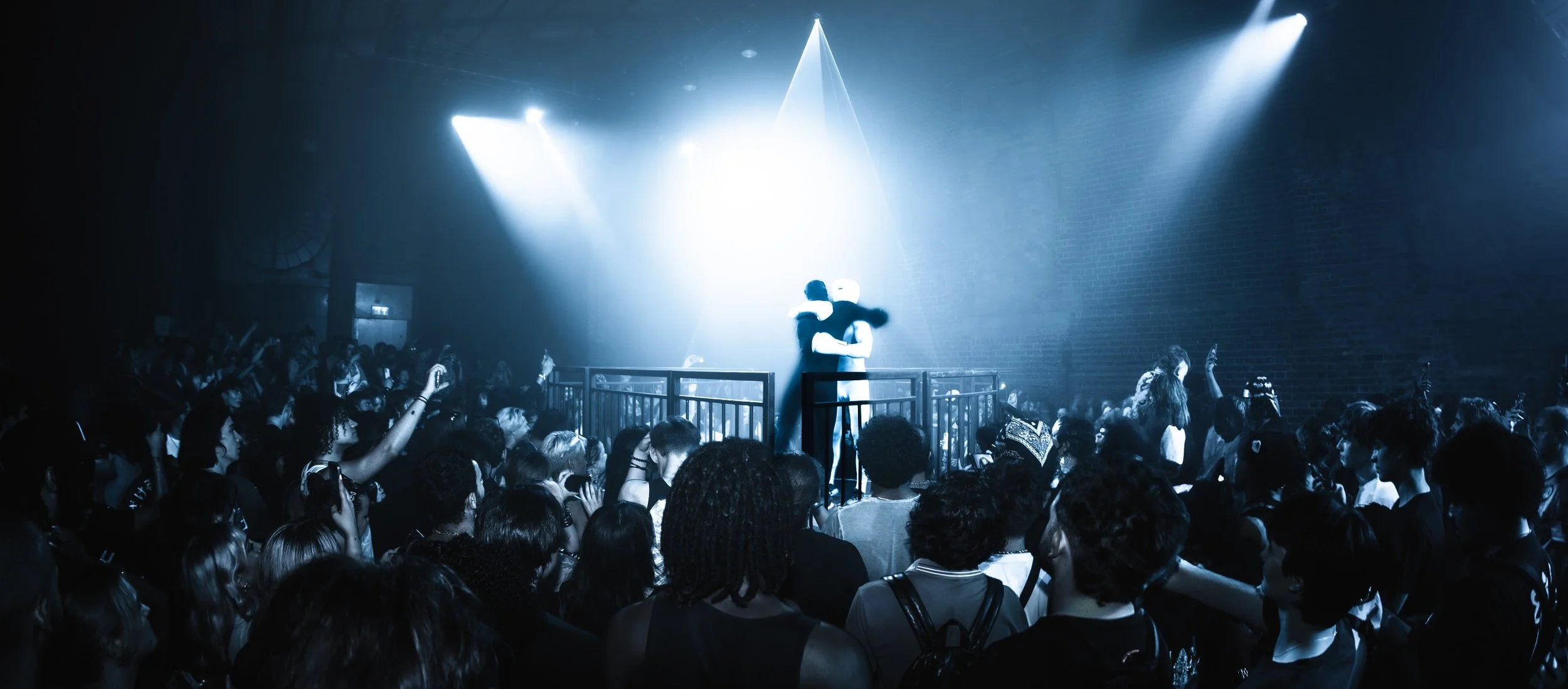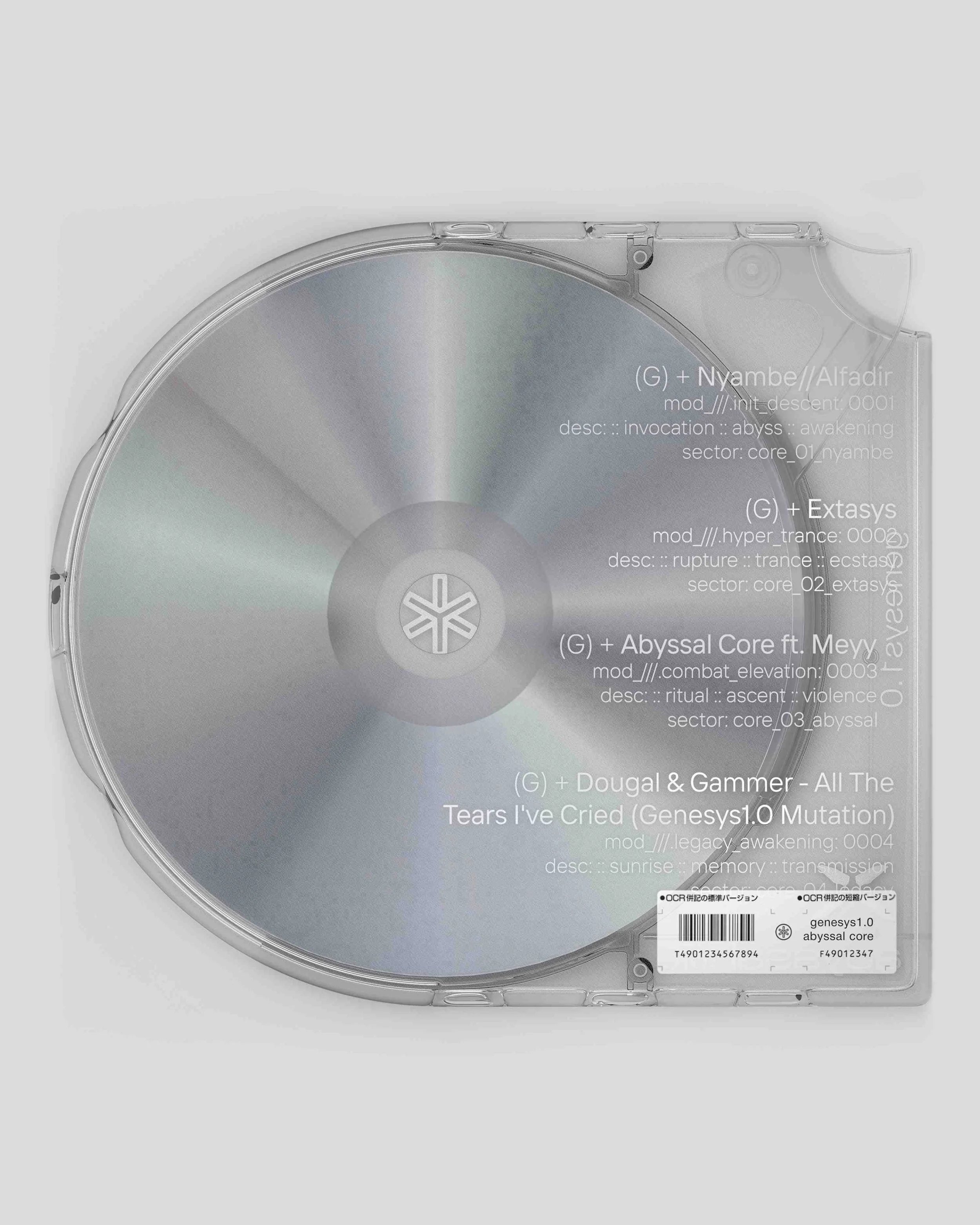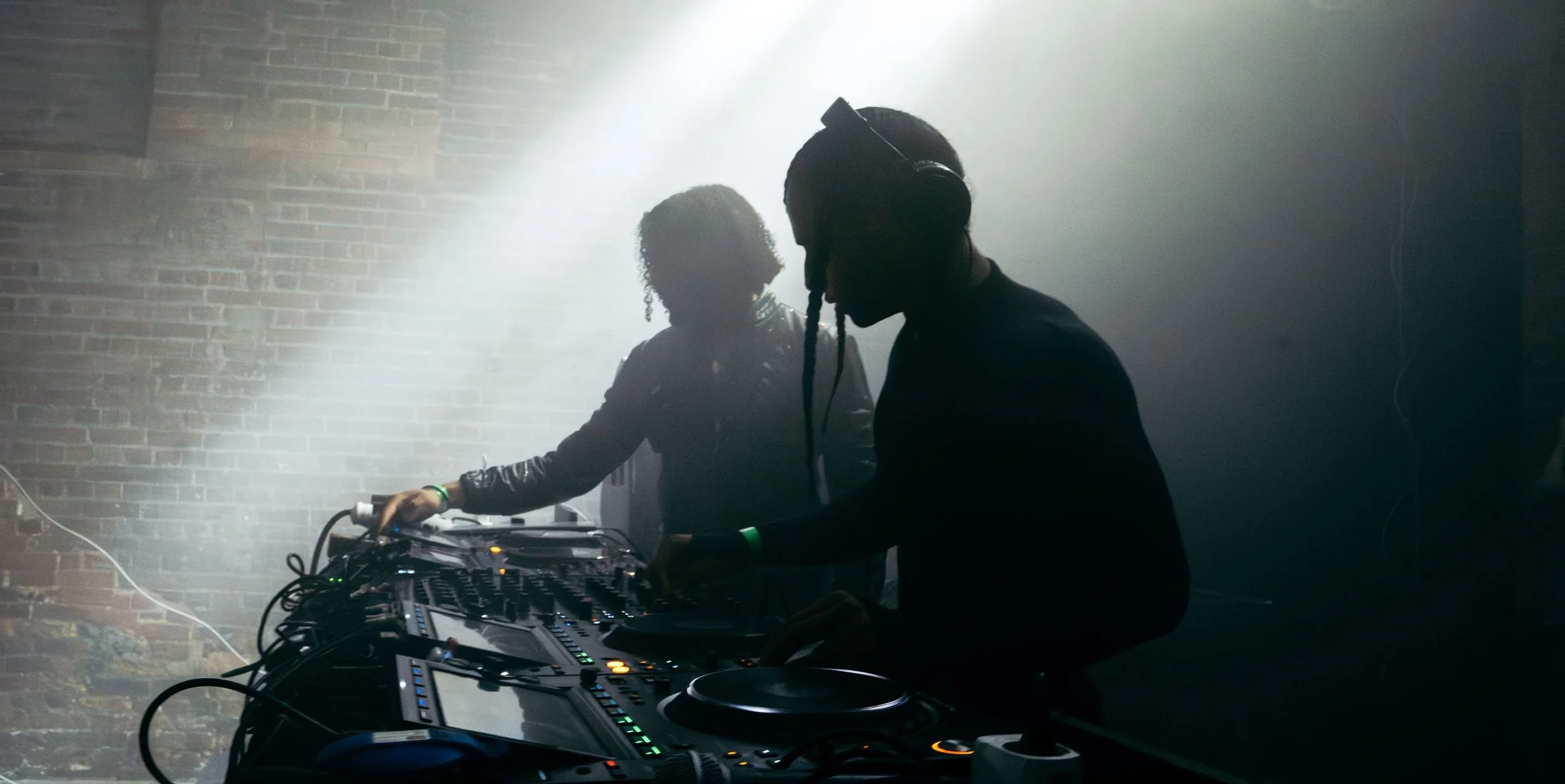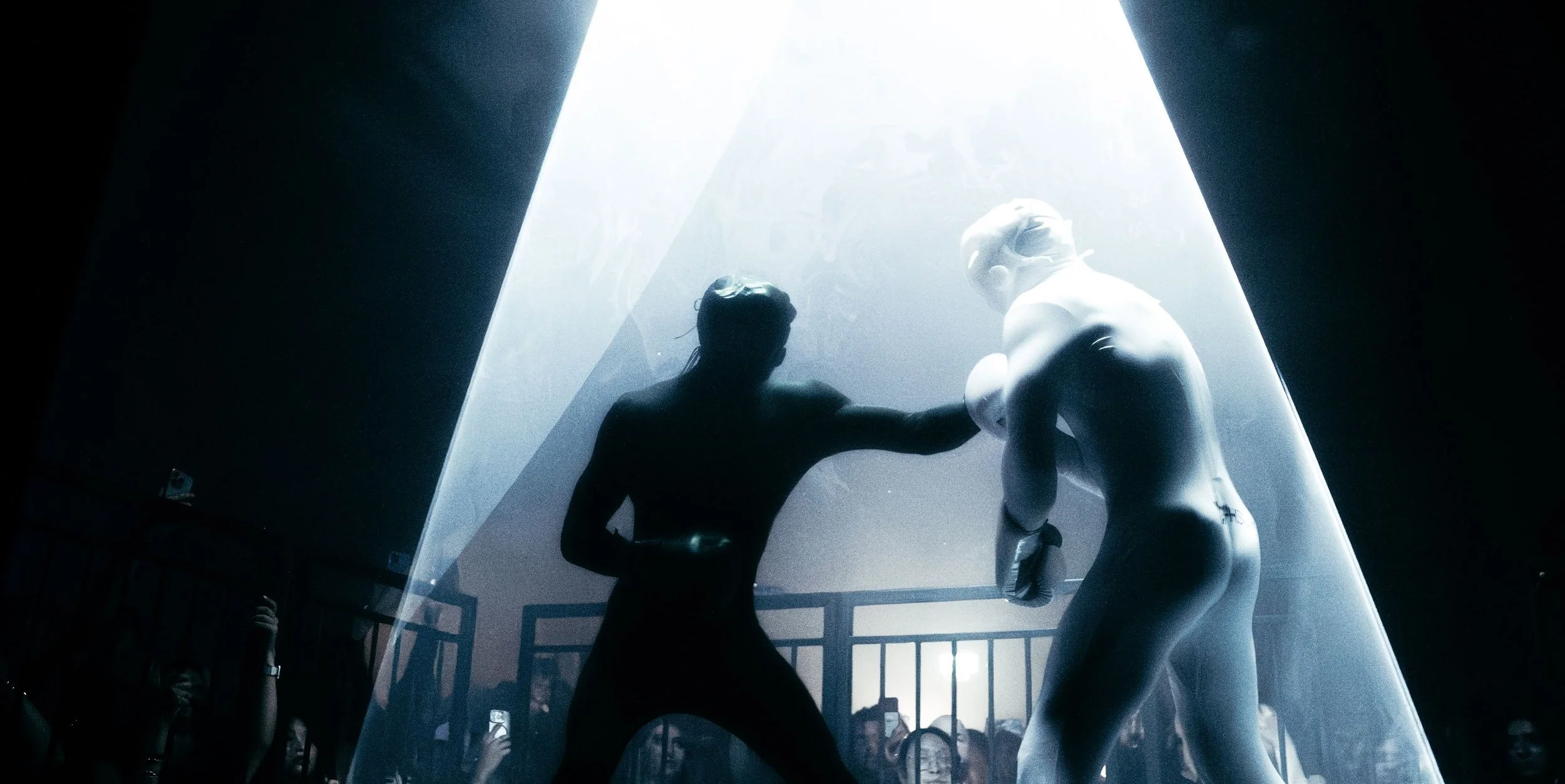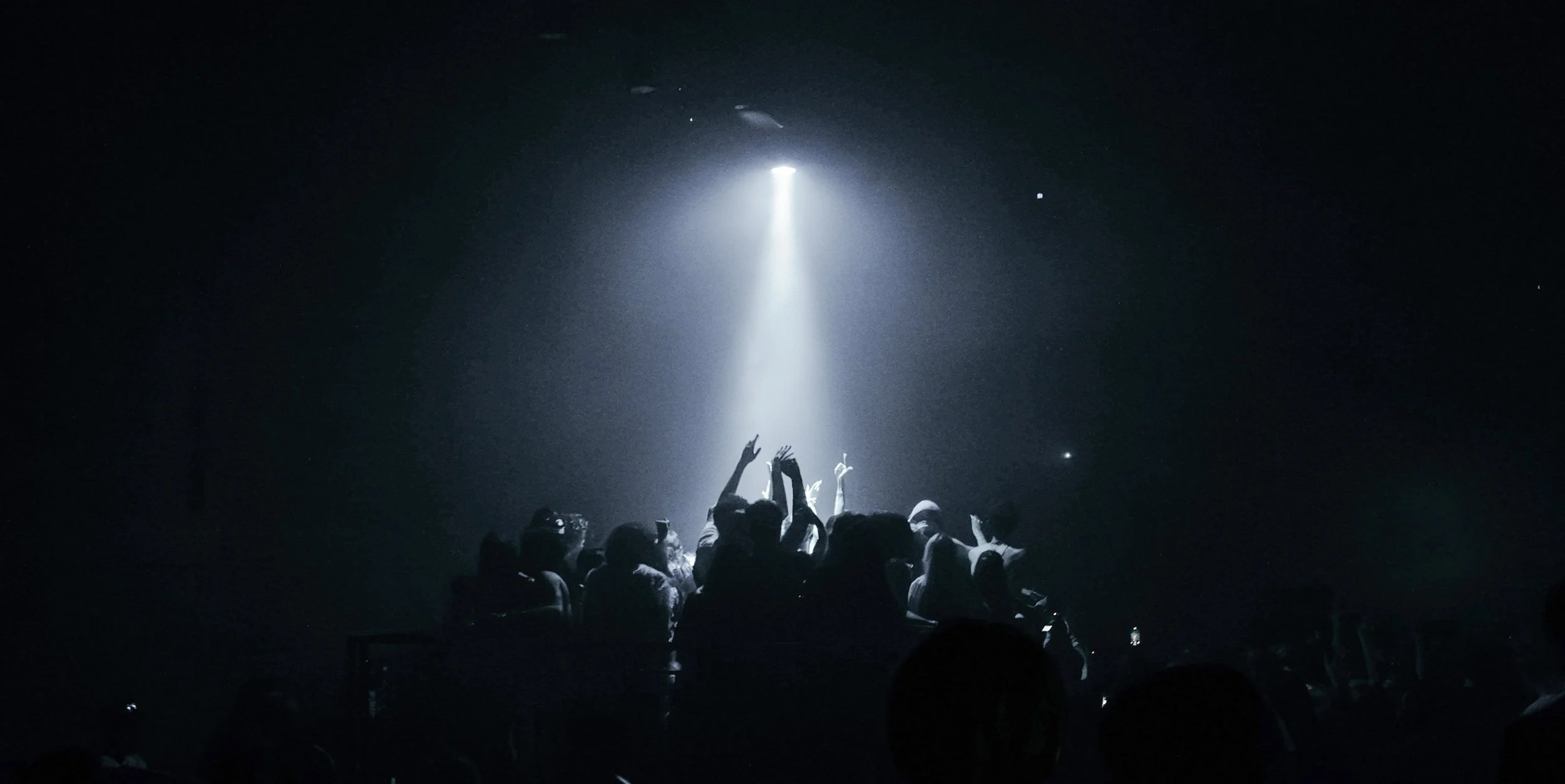genesys1.0
Photo @sheppyphotos
In the world of genesys1.0, thousands of years in the future, humans exist within the sentient superstructure, Nyambe. Collectively, they engage in “The Descent,” a journey to the Earth’s core in an attempt to reach Nyambe’s heart.
This is not a sci-fi movie or a video game, but electronic music, the setting of transmedia collective Genesys’ debut EP abyssal core. Hard trance meets speculative fiction as Genesys draws from all types of influences in their narratively and melodically rich world: Zulu chants, Celtic melodies, UK hardcore, ‘90s Japanese arthouse. Here, the technological and mythological are dissolved into one, making for a collective and rapturous rave odyssey.
“All cultures dance. It’s euphoric, it’s ritualistic,” explain Rain Paul Müller and Anam Maclean behind Genesys. “We want to validate raves as places to engage with intentional worlds, narratives and emotion to experience with so many others.”
Forming in 2022, the two began as an underground club collective in London, enraptured by the shared transcendence and euphoria experienced at raves. In a completely original format, they host hybrid MMA-rave nights, drawing from the shared state of primal ecstacy experienced in both trance music and combat. What started in an abandoned Brixton rail arch has since expanded across the UK, Japan, China and South Korea.
For their current project, the duo tell an inverse Tower of Babel-like story, filled with history, violence, and ritualised dance. “The journey downwards reflects what we’re actually doing to ourselves and the planet,” they explain. “What corporations call ‘progress’ is a destructive capitalist impulse fuelled by grief, ancestral trauma of vanquished traditions and indigenous culture.”
The result is a dynamic trance EP, euphoric and melodic, where history meets futurism. Rave becomes a means of collective transcendence, mythology, anti-capitalism, and the dual honouring of historical influences and primal instincts.
Photo @sheppyphotos
Your EP is set in a world where we exist inside Nyambe, a futuristic superstructure that burrows deep into the earth and is based on the Sun God of Bantu religions. Can you tell us a bit more about this setting and how it came to be?
One thing that really inspired the setting was the “Made in Abyss” series by Akihito Tsukushi, with abyss literally being in the title and a core aspect of the plot. The concept of a cursed descent into the abyss, each level bringing forth greater and greater physical and psychological penalties, and increasingly dangerous creatures was super inspiring. The depth of the effort put into the environment at each level of the abyss and the world building and history surrounding it is extremely impressive too.
What is ‘The Descent?’ The thing that first struck me was how it feels like an inversion of the Christian Tower of Babel story. What is it about humans that we must always build–or in this case, burrow?
Quite right, the journey downward reflects what we’re actually doing to ourselves, (and the planet) burrowing ourselves into a deeper, darker hole. What corporations call “progress” is a destructive capitalist impulse fuelled by grief, ancestral trauma of vanquished traditions and indigenous culture replaced by a uniform “culture” of suits and endless accumulation via rat race.
Photo @prosienta
Photo @prosienta
Your sound and aesthetic are both futuristic and historical, a dissolving of the technological, radiational and mythological all into one. How do you approach the idea of time in your worldbuilding?
We like to think about it like Kenji Kawai composing traditional Bulgarian choral mode to be performed by Japanese folk singers for the soundtrack of “Ghost in the Shell”. I think this occurs naturally within our process of worldbuilding. We spend a lot of time looking into ours and various others tribal histories, diets and religions. Anthropology has been a key aspect of our daily life forever and so has our engagement with media and literature that imagines what the future may be. These two interests seem to marry each-other seamlessly within our creative and ideological framework.
Photo @prosienta
Photo @prosienta
Photo @prosienta
Photo @prosienta
Do you see your world as one of hope or despondency?
This specific world is one where the inhabitants are able hopeful amidst despondecy, to ritual and rave amongst the darkness. Our next world will be a brighter one for sure.
In April, you threw an event called Total Sonic Knockout, a half-rave, half MMA fight night. What’s the thought process and intention that goes into planning these events? What sort of experience do you want people to have here?
It’s very simple actually, when you look at ethnomusicology and study trance state rituals, you find that they are often paired with combat rituals. Donga stick fighting in the Omo valley, Dambe amongst the Hausa tribes.
Both trance and combat are biotechnologies of group formation. They galvanise communities through a shared experience of primal ecstasy.
@belmorli
Why are raves a good medium of expression for your world and work?
All cultures dance, it’s euphoric, it’s ritualistic, we want to validate raves as an artform, places to engage with intentional worlds, narratives and emotion to experience with so many others. Some of our favourite pieces of art communicate their message through cataclysmic euphoria, and the dancefloor is the best place to facilitate that.
@belmorli
Recently, there’s been a lot of reporting on how young people are increasingly turning to religion. Do you have any thoughts on this collective shift towards spiritualism and transcendence? What are we all searching for?
Young people are starting to realise that what’s been so “uncool” about religion isn’t the only thing it has to offer, it’s more than old rigid rules and debatable historical events. Faith, hope, drive, purpose, inspiration and examples to live by are what people are really trying to find and religions/spirituality can supply that.
@belmorli
Interview by SHARYN BUDIARTO
What to read next




